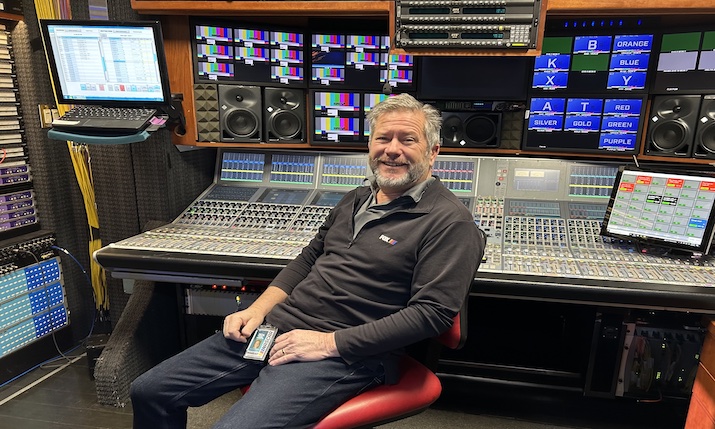Daytona 500 Ready To Rumble With Audio Produced by Remote Team
BSI will handle wireless team comms along with in-car RF audio and video
Story Highlights
Audio will be one of the stars when the 66th Daytona 500 begins Sunday, Feb. 18 on the 2.5-mile Daytona International Speedway. The race’s sound has always been an attraction of the broadcast, and producing it this year will be a REMI team scattered across the country.
Viewers can hear— and watch — the jewel of the weekend-long NASCAR Cup Series starting at 2:30 p.m. ET on FOX and the FOX Sports app, as well as through live-streaming services that carry FOX, including YouTube TV, Sling TV, Hulu+ and fuboTV.

A1 Kevin McCloskey: “You never want to take the track sound far out of the mix. It’s always part of everything.”
Setting the tone will be “Crank It Up,” the FX drum solo that FOX inserts at points during the race. It’s made up of a mix directly from submixer Chip Weaver’s Calrec Artemis submix console sent through A1 Kevin McCloskey’s main mix and sounds truly awesome in surround.
“Everyone loves ‘Crank It Up,’” says McCloskey. “Can’t imagine doing this race without it.”
Really Remote Production
Supporting McCloskey, who will be working aboard Game Creek Cleatus production truck at the venue, and Weaver, in the International Speedway stadium, are a REMI team comprising Race Comms Radio Editor Jeff Bratta, working from home in Georgia on a pair of Apple Mac Mini computers with a dual editing system comprising two Mac Minis and PreSonus Studio One 3 edit software to convert audio to USB for the computers, and Radio Mixer Jeff Feltz, at home in Indianapolis mixing on a Calrec Brio console. Viz and additional EVS operators are in Los Angeles and Pittsburgh; enhanced video editing, in Charlotte. Doug Wilson, in charge of comms, is at the track.
“What’s amazing about this is that, with all the signals we’re working with, there is extremely little latency in the system,” McCloskey marvels, noting that Bratta and Feltz are using Unity Intercom as the audio-signal–transport format. The signals are converted to and from Dante at the track.
One change this year is that BSI, which has provided the in-car RF audio and video, will also handle wireless team communications: the live chatter from driver, chief spotter to crew chief. McCloskey says the change was prompted by BSI’s ability, via new antennas and receiver, to improve the sonic quality and speech intelligibility of the in-car comms, improvements he credits to BSI EIC Timothy Caso. This weekend, McCloskey will have 48 channels of in-car audio coming in from the BSI truck over MADI.
“The improvement in sound quality is considerable,” he says.
The Core Sound
The one constant in NASCAR, McCloskey adds, is the sound of the cars. The roar of those engines provides for racing broadcasts what the crowds do for baseball and football: an underscore that serves as the bed upon which to build the rest of the show’s audio.
“Daytona is a great-sounding track,” he notes. “You never want to take the track sound far out of the mix. It’s always part of everything. You want to keep the announcers on top, but, under that, you have a ton of other stuff to work with: you have the unique sound of speed shots at 190 mph, the engines, the roar of the crowd. In between are the announcers but also the driver audio and the gear shifts, which are to auto racing what bat cracks are to baseball and the quarterback’s cadence is to football.”
Following the show’s quick cuts, from speed shots to straightaways, is also a challenge, hearing Lead Director Artie Kempner’s voice and then anticipating how the various technical directors will execute.
“The scene changes are quick and can be abrupt,” McCloskey says. ‘But that’s what makes watching and hearing it exciting. You have to concentrate over 500 miles. It’s a lot of intensity. It keeps you going.”
